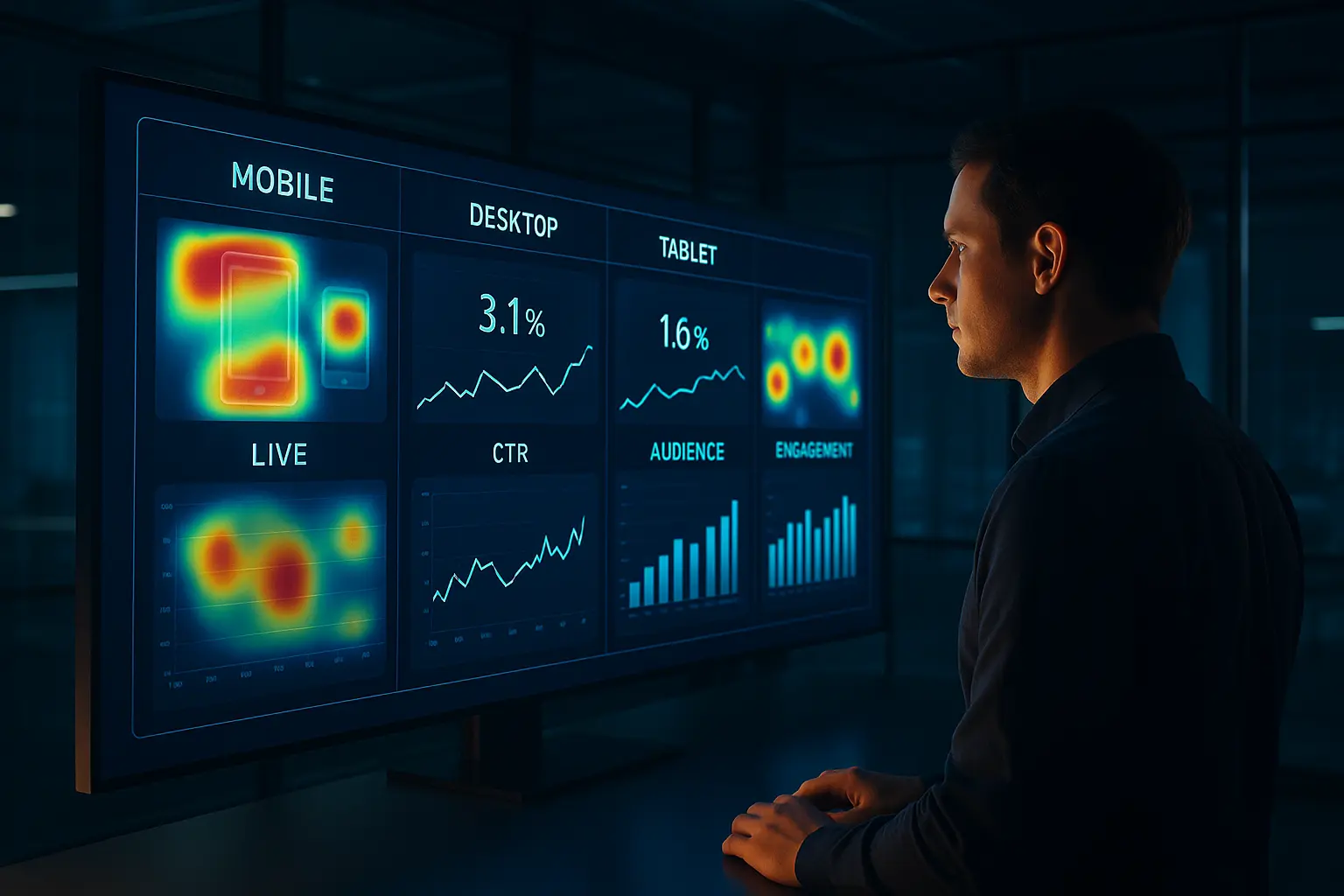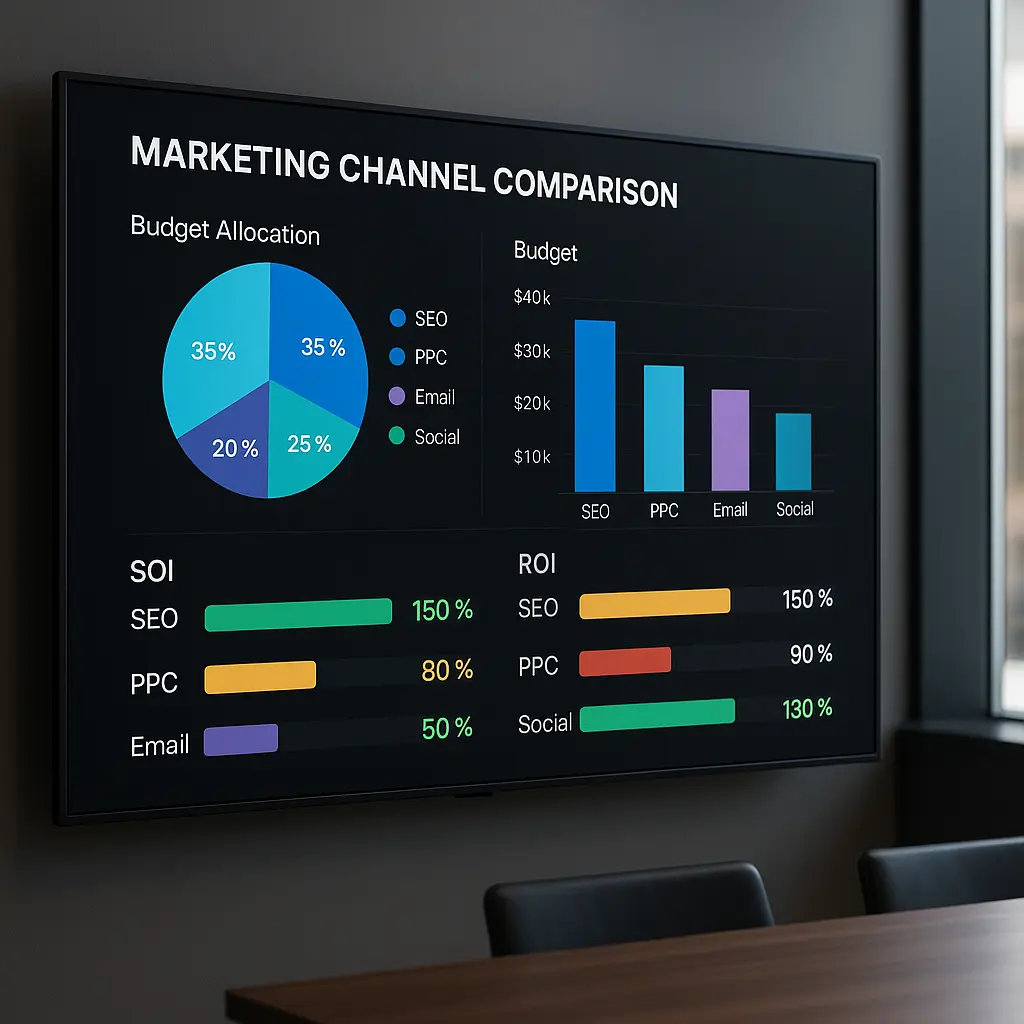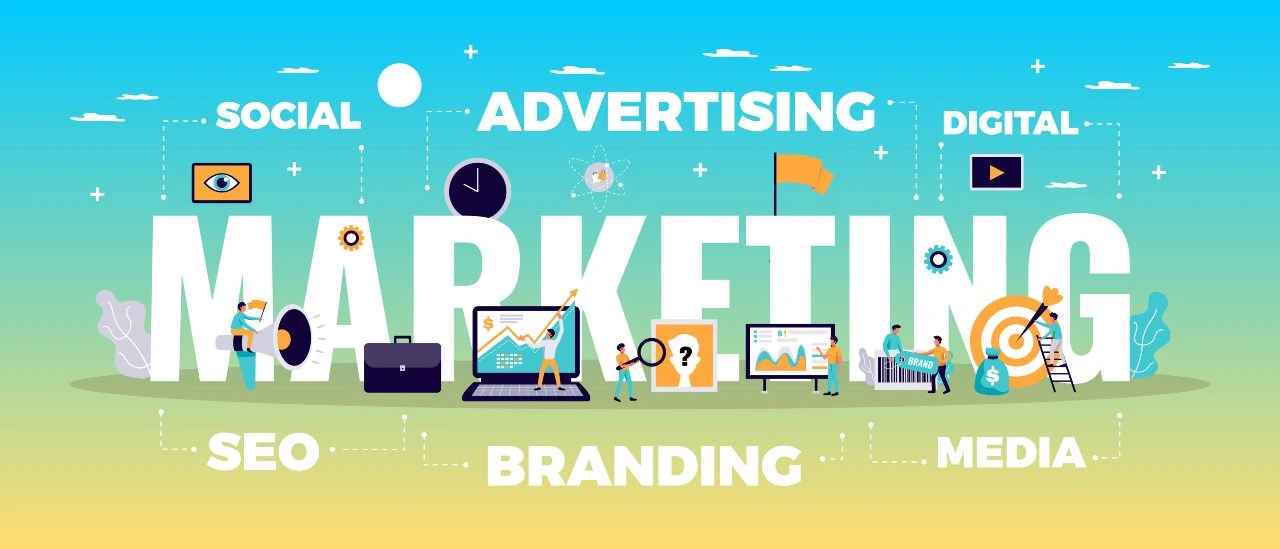“Our website redesign looks amazing, but where did all our traffic go?” – This question echoes through countless marketing meetings after rushed website overhauls. Just ask WooCommerce, who migrated from WooCommerce.com to Woo.com, only to suffer such devastating traffic losses they had to completely reverse course.
Your website is the best customer acquisition channel, not just a digital business card. But without strategic planning, your shiny new website could actually destroy years of hard-earned SEO equity overnight.
The difference between a successful website redesign and a traffic-killing mistake comes down to one thing: strategic planning with SEO at the core. This guide outlines proven strategies to not only protect your existing search equity but leverage your redesign to increase both traffic and qualified leads.
What Is a Website Redesign?
A website redesign is the strategic restructuring of your site to improve both appearance and performance. Gone are the days when your website could function as a static online brochure. Today’s successful business websites are sophisticated, evolving growth engines that continuously generate traffic, nurture prospects, and convert visitors into customers.
From Static Brochures to Digital Growth Engines
The truth is—website redesign isn’t just about making things look prettier. That outdated, static website that worked five years ago? It’s actively harming your business now. Modern users expect lightning-fast load times, intuitive navigation, and personalized experiences. Search engines demand technical excellence, valuable content, and mobile perfection.
It’s simple: redesigning your website means transforming it from a passive information repository into an active source of lead generation that works 24/7 to bring qualified traffic and convert it into measurable business results.
Website Redesign vs. Website Refresh
Before diving deeper, let’s clarify an important distinction:
A website revamp or refresh is essentially a cosmetic update—changing colors, updating images, or tweaking minor layout elements without altering the underlying structure or functionality. Think of it as repainting a house without changing the floor plan.
A true website redesign is a comprehensive overhaul that addresses fundamental aspects:
- Information architecture and user journeys
- Technical infrastructure and performance
- Content strategy and SEO foundations
- Conversion optimization and lead capture systems
As we’ve seen with countless clients, website redesigns fail when they prioritize aesthetics over performance. The most beautiful website in the world is worthless if it can’t be found in search or doesn’t convert visitors into customers.
When and Why You Should Redesign Your Website
Timing is everything when it comes to website redesign. Initiate too early, and you waste resources. Wait too long, and you lose market share to competitors with more effective digital presences.
Signs Your Website Is Holding You Back
Is it time for a website revamp? Watch for these red flags:
- Your website takes more than 3 seconds to load (47% of users expect pages to load in under 2 seconds)
- Mobile traffic has high bounce rates (over 60%)
- Your conversion rates are below industry benchmarks
- Organic traffic has plateaued or declined for 3+ consecutive months
- Your competitors’ websites offer significantly better user experiences
- Your team struggles to update content without developer assistance
- The design looks visibly outdated compared to industry standards
- You’re embarrassed to share your URL with potential clients
If three or more of these signs resonate with you, it’s time to redesign website components from the ground up—your current site isn’t just static, it’s actively undermining your growth potential.
Strategic Reasons for Redesigning
Beyond fixing problems, forward-thinking businesses leverage website redesign plans as strategic growth initiatives:
- Business pivot or repositioning in the market
- Expanding service offerings or entering new market segments
- Rebranding or visual identity evolution
- Implementing advanced marketing automation or personalization
- Consolidating multiple web properties into a cohesive experience
- Addressing fundamental usability issues identified through user testing
- Improving technical SEO foundation for competitive advantage
Benefits of Redesigning With Purpose
When executed strategically, the benefits of website redesign extend far beyond aesthetics, as we’ve demonstrated through our proven records:
- Increased organic traffic through improved technical SEO and content strategy
- Higher conversion rates from optimized user journeys and clearer calls-to-action
- Improved user engagement metrics (time on site, pages per session)
- Better mobile performance leading to lower bounce rates
- Enhanced brand perception and market positioning
- Streamlined content management for marketing team efficiency
- Faster load times contributing to both user experience and SEO
- Improved lead quality through better qualification and nurturing paths
Here’s where things get interesting: businesses that approach website redesign with clear goals and measurement frameworks see significant increases in lead generation within six months of launch.
Top SEO Mistakes to Avoid During a Website Redesign
Now for the critical part—let’s talk about the SEO catastrophes that can derail your website redesign and tank your traffic overnight. These aren’t theoretical concerns; they’re real-world disasters we’ve had to rescue clients from. Here are the most common SEO mistakes to avoid when redesigning a website:
Deleting or Rewriting SEO-Heavy Pages Without Analysis
One of the most devastating mistakes? Carelessly deleting or rewriting pages that already rank well. These top-ranking pages have earned their positions through backlinks, engagement metrics, and relevance signals built over the years.
How to avoid: Before touching content, run a complete audit using Google Search Console and Semrush or Ahrefs to identify your SEO assets as you need a comprehensive approach that combines multiple data sources. Flag pages driving significant organic traffic for preservation with SEO optimization for landing pages being particularly critical.
Forgetting to Implement a 301 Redirect Strategy
If you launch your redesigned website with new URLs but without proper redirects, you’ve essentially told Google to forget years of accumulated ranking signals. It’s the equivalent of moving without a forwarding address.
Prevention strategy: Create a comprehensive URL mapping document pairing every old URL with its new destination. Implement 301 redirects for every changed URL, even seemingly minor ones.
Breaking Internal Link Networks
Internal links aren’t just navigation aids; they’re crucial SEO assets that distribute authority and establish semantic relationships between content. During website revamps, these pathways often get destroyed.
The solution: Map your existing internal link structure before redesigning a website, particularly for high-value topic clusters. Ensure these connections are preserved or enhanced in the new design.
Rebuilding Without SEO-Informed Architecture
Your site structure signals content importance to search engines. Flattening your hierarchy or randomly reorganizing content categories can devastate search visibility.
What to do: Partner with SEO specialists on an information architecture that prioritizes valuable pages (within 3 clicks from the homepage) while creating logical topic clusters that strengthen authority in key subject areas.
Developers Introducing Technical SEO Errors
Development teams focused on functionality and design can inadvertently introduce catastrophic SEO issues if they’re not working from an SEO checklist.
The most common technical disasters include:
- Accidental inclusion of no index tags in production
- Improper handling of canonical tags
- Broken header hierarchy (missing H1s or illogical heading structure)
- Removal of structured data markup
- Implementation of JavaScript that hinders crawlability
To prevent that, provide developers with a comprehensive SEO requirements document before coding begins, and build in SEO review checkpoints throughout development.
Ignoring Core Web Vitals and Page Speed
In pursuit of visual impact, many website redesign plans introduce performance-killing elements like oversized images or heavy scripts—destroying Core Web Vitals scores that directly impact rankings. To avoid that, establish performance budgets before design begins, regularly test development builds for speed issues, and optimize all visual assets.
Remember that every 100ms increase in load time can reduce conversions by 7%.
Use Google’s PageSpeed Insights tool for objective measurements.
Neglecting Schema Markup and Metadata
In the rush to launch, structured data and metadata often get left behind—eliminating opportunities for enhanced search listings and rich results.
The solution: Inventory all existing schema implementations before redesigning, then ensure each is properly migrated and expanded where possible. Don’t forget to optimize title tags, meta descriptions, and image attributes for every page.
Breaking Analytics Tracking
Analytics continuity is frequently overlooked during SEO and website redesign, leading to data gaps that make measuring success impossible. To prevent that document all tracking implementations, including Google Analytics, Tag Manager, conversion events, and marketing automation integrations. Test thoroughly in staging environments before launch.
How to Redesign Website Without Losing SEO
Now that you understand what can go wrong, let’s build a framework for a website redesign plan without losing SEO.
Define Clear Business and Marketing Goals
To begin with—what specific outcomes should this redesign achieve? Vague objectives like “modernize the site” aren’t measurable. Instead, establish concrete targets:
- Increase organic traffic by X% within six months
- Improve lead conversion rates from Y% to Z%
- Reduce bounce rates on key landing pages by X%
- Increase average order value by Y%
- Improve mobile conversion rate by Z%
Your goals should directly connect to revenue and growth metrics, not just vanity statistics. This focus ensures your website redesign plan remains aligned with business priorities and website marketing strategies throughout the process.
Conduct a Comprehensive Pre-Redesign Audit
Start with data, not opinions. Before transforming your site, document its current state through multiple lenses.
Traffic patterns reveal which pages drive organic visibility and conversions. User behavior metrics highlight engagement strengths and weaknesses. Technical assessments expose infrastructure issues that limit performance.
A proper audit combines Google Analytics, Search Console, and specialized SEO tools to establish both what’s working and what needs improvement.
Design User-First, SEO-Informed Experiences
The most effective websites align perfectly with user intent at each stage of the customer journey. Start by mapping:
- How different audience segments discover and navigate your site
- Which friction points prevent conversions
- What intuitive paths lead to key actions for each visitor type
Then overlay search visibility requirements: logical information hierarchy, clear topical relevance, and strategic keyword positioning.
Remember that search engines reward sites that satisfy user intent—making this balanced approach essential. Our web design and development services specialize in this conversion-focused architecture.
Develop a Comprehensive Content Strategy
Your content strategy should answer three fundamental questions:
What stays? Strategic improvements to existing content while preserving SEO value.
What’s new? Fresh content addressing gaps in your customer journey.
How does it connect? Topic clusters that build authority and align with search intent.
Content isn’t just words on a page—it’s the backbone of both user experience and search visibility.
Establish a Clear Implementation Process
A successful redesign requires collaboration between web development and digital marketing teams to prevent siloed decision-making:
- Create detailed timelines with dependencies mapped
- Establish clear ownership for each aspect (design, development, content, SEO)
- Build multiple checkpoints for SEO review throughout development
- Document technical requirements and hand-off procedures
- Develop pre-launch and post-launch monitoring protocols
For complex projects, consider SEO services outsourcing to specialists who can work alongside your design and development teams.
Implement Technical Safeguards
Before launch, ensure your development team has implemented critical technical requirements:
- Proper robots.txt configuration
- XML sitemap with all important URLs
- Canonical tags to prevent duplicate content
- Mobile-responsive design across all templates
- Fast-loading assets and optimized images
- Secure HTTPS implementation
These technical foundations ensure search engines can properly access, understand, and index your new site.
Create a Measurement Framework
You can’t improve what you don’t measure. Before launch, establish:
A robust analytics infrastructure with custom dashboards tracking key metrics. Baseline comparisons to pre-launch data that highlight improvements and regressions. Automated alerts flagging significant traffic changes.
Schedule regular performance reviews (weekly for the first month, then monthly) to identify optimization opportunities. Document conversion tracking for all important actions to measure business impact, not just traffic shifts.
Website Redesign Process: Phases & Timeline
Now, let’s break down a realistic website redesign process that integrates SEO at every step. This phased approach ensures you don’t miss critical elements or create workflow bottlenecks.
Phase 1 – Discovery & Goal Alignment
Timeline: 2-3 weeks
Key activities:
- Stakeholder interviews and goal definition
- Competitive analysis and benchmarking
- Current site analytics review
- Target audience research and persona development
- Technical and SEO audit
- Content inventory and performance analysis
Deliverables: Project brief, SEO/UX audit report, and measurable KPIs
Phase 2 – Strategic Planning
Timeline: 2-4 weeks
Key activities:
- Information architecture development
- Keyword mapping to content plan
- User journey mapping
- URL structure planning
- Redirect strategy documentation
- Content gap analysis
Deliverables: Sitemap, URL mapping document, and content strategy
Phase 3 – UX Design & Wireframes
Timeline: 3-5 weeks
Key activities:
- Wireframe development for key templates
- Navigation system design
- Call-to-action placement strategy
- Mobile-first layout planning
- User testing on wireframes
- SEO element integration planning
Deliverables: Wireframes, user flow diagrams, and navigation structure
Phase 4 – UI Design & Branding Alignment
Timeline: 3-4 weeks
Key activities:
- Visual design system development
- Brand integration
- UI component design
- Responsive breakpoint planning
- Animation and interaction design
- Accessibility compliance
Deliverables: Design system, page mockups, and UI component library
Phase 5 – SEO-Driven Pre-Migration Strategy
Timeline: 4-8 weeks (concurrent with other phases)
Key activities:
- Technical SEO audit and benchmarking
- Content audit and migration planning
- New content creation based on keyword gaps
- Metadata optimization
- Header hierarchy planning
- Internal linking strategy
- Schema markup planning
- Pre-migration checklist development
Once the redesign strategy is in place, the SEO team develops a comprehensive pre-migration strategy and plan. This phase goes beyond content planning to include technical audits, performance benchmarks, and migration protocols that ensure SEO equity is preserved throughout the transition.
Phase 6 – Development, QA & SEO Implementation
Timeline: 6-12 weeks
Key activities:
- Front-end and back-end development
- CMS customization and setup
- Schema markup implementation
- Page speed optimization
- Cross-browser testing
- SEO technical implementation
- Redirect setup
Deliverables: Staging site, technical SEO validation report, and pre-launch checklist
Phase 7 – Launch & Immediate Monitoring
Timeline: 1 week launch + 2-3 weeks initial monitoring
Key activities:
- DNS and server configuration
- Redirect implementation verification
- Search Console and analytics setup
- Initial crawl monitoring
- Indexation tracking
- Performance monitoring
- Issue identification and resolution
Deliverables: Launch report, 30-day performance analysis, and optimization recommendations
Phase 8 – Post-Migration SEO Audit & Optimization
Timeline: 2-4 weeks after initial monitoring
Key activities:
- Comprehensive post-migration SEO audit
- Crawl errors identification and resolution
- Redirect chain analysis and optimization
- Content performance evaluation
- Rankings monitoring for key pages
- Technical SEO verification
- Implementation of necessary adjustments
The entire website redesign process typically takes 4-8 months for mid-sized business websites. Rushing any phase increases the risk of costly mistakes that impact both user experience and search performance.
How to Measure the Success of Your Redesign
The ultimate test of your website redesign isn’t subjective opinion—it’s data-driven performance improvement across multiple dimensions.
Performance metrics that matter:
SEO metrics: Track organic traffic volume, keyword rankings (especially high-value commercial terms), indexation status, and search CTRs using Google Search Console and GA4. SEO services on monthly basis can help interpret these trends and implement ongoing optimizations.
User experience indicators: Monitor bounce rates by device, session duration, pages per session, and navigation patterns. Heat maps and scroll depth analysis reveal how users interact with your new design.
Conversion performance: Measure form submissions, call tracking data, email signups, trial activations, demo requests, and e-commerce transactions. Connect these directly to revenue to demonstrate ROI.
Long-term growth signals: Watch for domain authority improvements, backlink acquisition rates, brand mentions, and social engagement. These trailing indicators often take 3-6 months to fully materialize but signal lasting impact. For a comprehensive analysis, our enterprise SEO audit process provides valuable insights.
Establish a regular review cadence—weekly for the first month, then monthly—to identify optimization opportunities. Remember that post-launch is when the real work begins; successful website redesigns evolve continuously based on user behavior and search performance data.
Conclusion: Don’t Just Redesign — Reinvent for Growth
A strategic website redesign isn’t just about making your digital presence look better—it’s about making it work harder for your business. When executed with careful planning and SEO at its core, your redesigned website becomes a powerful engine for traffic, leads, and revenue growth.
The difference between success and failure lies in the approach. Cosmetic updates without strategic foundations rarely deliver meaningful business results. But a comprehensive redesign built on data, user needs, and search engine best practices can transform your digital performance.
Remember: your competitors are continuously evolving their digital presence. Standing still means falling behind. By following the framework we’ve outlined—preserving SEO assets while enhancing user experience and conversion pathways—you position your business for sustainable digital growth.
Ready to transform your website into a high-performance lead generation machine?
Our team combines deep SEO expertise with cutting-edge design and development capabilities. Contact us to discuss how our customized SEO services can drive your next successful website transformation.
Frequently Asked Questions
How often should a business redesign its website?
Most businesses should consider a website redesign every 2-3 years, with ongoing smaller updates between major overhauls. The right timing depends on your specific circumstances—significant business changes, shifts in user behavior, or declining performance metrics may necessitate earlier action.
What are the benefits of a website redesign?
A strategic website redesign delivers improved user experience, better technical performance, enhanced SEO visibility, streamlined conversion paths, and modernized visual design. The most successful redesigns focus on measurable performance improvements rather than superficial design changes.
Does a website redesign improve SEO?
Yes, when SEO is integrated from planning through execution. Poorly planned website redesigns can damage rankings by breaking links, removing content, or introducing technical issues. Work with experienced SEO professionals to preserve existing equity while enhancing ranking potential.
How much does a typical website redesign cost?
Costs vary by complexity and business size: small business sites typically range from $5,000-$15,000, mid-size company redesigns from $20,000-$75,000, and enterprise-level projects often exceed $100,000. Evaluate the investment against potential traffic and revenue gains. When undertaking enterprise-level redesigns, choosing a reliable SEO company with proven migration experience becomes critical to success.
What’s the difference between a website refresh and a full redesign?
A website refresh updates visual elements while maintaining the existing structure and functionality. A full website redesign comprehensively changes information architecture, user experience, content strategy, and technical foundation. While more complex, a redesign addresses fundamental issues and creates greater improvement potential.
How long does a website redesign take?
A proper website redesign typically takes 12-24 weeks from start to launch, including discovery (2-4 weeks), design (4-8 weeks), development (6-12 weeks), content creation (4-8 weeks), and testing/launch (2-3 weeks). Rushing almost always results in costly mistakes.
What role does UX play in a successful website redesign?
UX is central to website redesign success, driving improved engagement and conversion rates. The most effective approach integrates UX and SEO from the start—creating experiences that satisfy both users and search engines. Our comprehensive guide to web design and SEO services demonstrates how these disciplines work together for maximum impact.
About Creating the Article on Website Redesign Plan
This article is written by Mikheil Kandaurishvili and reviewed by Araksya Hakobjanyan, SEO Lead at Scopic Studios.
Scopic Studios delivers exceptional and engaging content rooted in our expertise across marketing and creative services. Our team of talented writers and digital experts excel in transforming intricate concepts into captivating narratives tailored for diverse industries. We’re passionate about crafting content that not only resonates but also drives value across all digital platforms.
Note: This blog’s images are sourced from Freepik.




























































































































































































































































